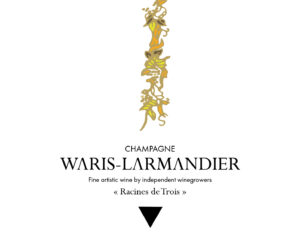Waris-Larmandier
Racines de Trois Brut Champagne
Waris-Larmandier Racines de Trois Brut Champagne
Cuvée Racines de Trois represents the “three roots” of Waris-Larmandier: the contribution of the three siblings to the project, and their use of three grape varieties (chardonnay, pinot noir, and meunier), coming from three regions of Champagne (Côte des Blancs, Montagne de Reims, and Côte des Bar). Together they form the base of Waris-Larmandier’s entry-level Champagne, which combines the structure of chardonnay with the red-fruit characteristics from the two pinots in an incredibly food-friendly, drinkable package. The Waris-Larmandier family utilizes natural and regenerative agricultural practices to cultivate their old-vine Grand Cru vineyards near their village of Avize in the Côte des Blancs. Racines de Trois is certified organic and biodynamic Champagne. The Waris-Larmandier style is terroir-focused, understated, structured, and ultra-elegant.
Terroir
• Côte des Bar: Bar-sur-Seine, Avirey-Lingey, Éguilly-sous-Bois. Planted to Pinot Noir, making up approximately 30% of the cuvée.
• Montagne de Reims: Bligny and Chamery. Planted to Premier Cru Pinot Noir and Pinot Meunier, making up approximately 10% of the cuvée.
• Côte des Blancs: Chouilly, Cramant, Avize, Oger, Mesnil-sur-Oger planted to Chardonnay, making up approximately 60% of the cuvée.
Vinification – Grapes are hand-harvested and crushed in a traditional 4000kg vertical wooden basket press; only free-run juice is used for the primary fermentation. Racines de Trois ferments with indigenous yeast in stainless steel tanks and 600L demi-muid Burgundy barrels. Malolactic fermentation is spontaneous following alcoholic fermentation. The base wines are aged six to 18 months before secondary fermentation in bottle, followed by 24-36 months of lees aging, sur lattes. Disgorgements are done according to the lunar cycle, with a dosage of 4g/L.


